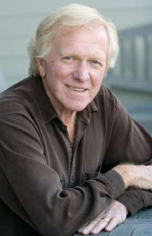Seeing that this is my Point of View—and I like to get grim news out of the way first—let’s start with 2007’s Biggest Disappointment. It’s the Marin County Board of Supervisors’ adoption of a politically dictated Countywide General Plan. Here was Marin’s chance to show real leadership, to become more sustainable and to lower its carbon footprint—but by catering to environmental extremists, the supes missed the opportunity. The St. Vincent’s “compromise” was nothing of the sort. The finally adopted plan was so loaded with constraints that it remains to be seen if much needed senior housing, both affordable and market rate, will ever be built at this site. Marin is already 80 percent open space and for 35 years the St. Vincent’s 1,100 acres have been designated for “urban development.”
Donna Bjorn, president of Marin’s League of Women Voters, had this to say about the plan: “It’s nothing but environmental hypocrisy. Marin already has ample protected environmental habitat. What we need is a viable habitat for the people who live and work here. This plan failed to achieve that goal. It is not sustainable and Marin is in danger of losing its human and economic diversity.”
Instead of adopting a plan that was innovative, progressive and courageous, Marin’s supervisors, after seven years of planning and preparation, took the path of just saying no. As a result, I maintain Marin is not only pushing its problems into the future, but we are also unloading our shortcomings on surrounding counties and local freeways. Marin’s carbon footprint will continue to grow and our claims of sustainability ring hollow.
On a more positive note, 2008’s Most Anticipated Development is the completion of the 101 Freeway expansion project. “We’re on schedule to finish in December of ’08,” says Dianne Steinhauser, director of the Transportation Authority of Marin. The expansion project involves adding a lane, which during rush hour becomes a commuter (HOV) lane as it passes through San Rafael. “This means buses, van pools, and cars with more than a single occupant will have an uninterrupted run through Marin County,” Steinhauser says, “something we’ve never had.” The project also includes adding an eastbound lane to the I-580 (Richmond Bridge) interchange. When completed, the project will have cost $124 million and taken two years. Yet the question remains: will the new carpool lane be used during rush hours?
Now let’s celebrate some private sector victories. One of 2007’s Most Positive Outcomes was the opening of Nick’s Cove on Highway 1 between Marshall and Tomales. The $14 million restaurant, 12–cabin resort was eight years in planning and development and, after three months of operation, appears to have energized the entire area. “Business is good,” says Leilani Martin, manager of the Marshall Store, a locally popular oyster bar three miles south. “Typically, people have lunch here, go kayaking or hiking, then have dinner at Nick’s.”
Regarding a similar, but even larger project, one of 2008’s Most Exciting Openings will be the completion of Cavallo Point—The Lodge at the Golden Gate. This $90 million project involves the restoration of 28 red-roofed, Colonial Revival barracks into a resort and conference center at Fort Baker, just south of Sausalito.
“In all, there will be 132 rooms, a 15,000-square-foot meeting center and a 100-seat restaurant and bar with a demonstration kitchen that includes a wine and olive oil kiosk,” says Mike Freed, managing director of Passport Resorts, the company that also oversees Big Sur’s Post Ranch Inn, Jean-Michael Cousteau’s Fiji Islands Resort and Hawaii’s Hotel Hana-Maui. Also housed at Cavallo Point will be the Institute at the Golden Gate, a conference center bringing together groups, at discounted rates, to discuss the environment and sustainability. Cavallo Point is set to open in May.
In closing, I’m drawn to the “three E’s” definition of sustainability: “A balancing of the environment, the economy, and the area’s social equity.” While environment and economy are self-explanatory, social equity implies that the opportunity to live in Marin be open to the largest possible segment of the Bay Area population, regardless of income. I certainly agree with that principle. I also believe a strong economy and a protected environment are not mutually exclusive conditions. That’s my point of view. What is yours?
E-mail [email protected]


